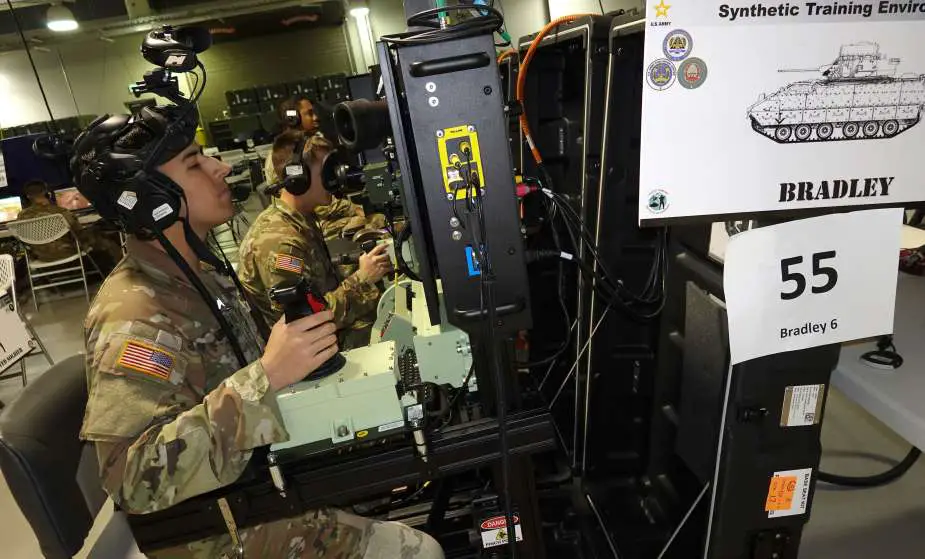US soldiers test new synthetic training environment
U.S. soldiers from the 1st Cavalry Division, typically engaged in field exercises with Abrams tanks, Stryker and Bradley combat vehicles, are now exploring a novel virtual synthetic training environment (STE) indoors, as reported by Michael M. Novogradac from the U.S. Army Operational Test Command.
Follow Army Recognition on Google News at this link

Sgt. Andreis I. Izguerra, a cavalry scout with 4th Squadron, 9th Cavalry Regiment, 2nd Armored Brigade Combat Team, 1st Cavalry Division, operates a Bradley combat vehicle in a tactical combat simulator as he contributes to the operational demonstration of the Army’s new Synthetic Training Environment system, as part of the Reconfigurable Virtual Collective Trainer, at Fort Cavazos, Texas (Picture source: U.S. Army/Michael Novogradac)
Brig. Gen. George C. Hackler, commander of the Operational Test Command, highlighted the Army's commitment to developing STE, a cutting-edge simulation training framework designed for contemporary battlefield scenarios. This initiative represents a significant shift in military training methodologies, incorporating virtual reality, augmented reality, and gaming technologies to enhance soldiers' combat readiness.
Participants in the testing phase are providing valuable input to refine and determine the future direction of STE, enabling simulated training in various combat scenarios. Hackler emphasized the potential of STE to unite air and ground units in joint mission rehearsals across global locations via networked environments.
The STE setup was introduced at Fort Cavazos' Close Combat Tactical Trainer facility, offering ample space for the immersive system. A 1st CAV tank platoon conducted field tests to assess the system's effectiveness, contributing insights to improve the virtual training platform.
Sgt. 1st Class James R. Maxwell of B Company, 1st Battalion, 8th Cavalry Regiment, praised the system for its innovative approach to training, highlighting the opportunity to explore its capabilities and limitations. Spc. Tanner James Peake shared his enthusiasm for participating in this groundbreaking testing, noting the significant advantages of virtual reality goggles in enhancing situational awareness for tank crews.
1st Lt. Julia D. Woodlief played a pivotal role in managing virtual opposing forces and facilitating after-action reviews, offering comprehensive insights into the platoon's performance. The STE's interactive and realistic simulations are designed to mirror the complexities of modern combat, as outlined by Robert L. Carroll from the Mission Command Test Directorate.
The system's networked capabilities suggest a versatile training solution that can be deployed globally, supporting units in both pre-deployment and operational phases. Shelby R. Schoolcraft, a Military Test Plans Analyst at OTC, explained the rigorous testing process, including focus groups and data collection, to evaluate the system's effectiveness, suitability, and survivability.
The collaborative effort involved multiple Army units and agencies, demonstrating the wide-ranging support for advancing military training technologies. This operational demonstration underscores the Army's dedication to leveraging innovative solutions to prepare soldiers for the challenges of future combat environments.
Defense News March 2024


























